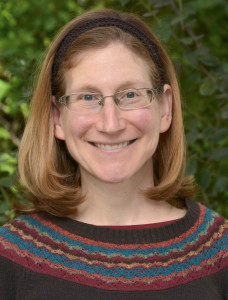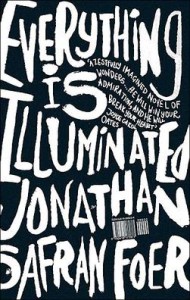Author Archives: admin
December 10, 2018 by admin
My Jewish Summer Camp Was Destroyed in the Woolsey Fires—But We Vow to Rebuild
 Last month, I heard the news: Camp JCA Shalom, the summer camp I attended for many years as a child, was almost entirely destroyed in the Woolsey fire that ravaged parts of Los Angeles County.
Last month, I heard the news: Camp JCA Shalom, the summer camp I attended for many years as a child, was almost entirely destroyed in the Woolsey fire that ravaged parts of Los Angeles County.
And just a few weeks earlier, I woke up to several text messages offering me condolences, full of well wishes and broken heart emojis. I checked the news to discover that a man shouting “all Jews must die” had murdered eleven people and injured seven others during Shabbat services at a Pittsburgh synagogue.
- No Comments
November 29, 2018 by admin
A Mizrachi Jew, from Memphis to Hillel
Zahava— with her mother who made kugel for shabbat and her father who went by Yonasan (not Yonatan); her pale, lightly freckled skin complimented by her dark, wavy hair (that was never certifiably curly but had the volume that suggested it easily could be); who had a grandfather on one side who was a holocaust survivor and a maternal grandmother whose accent was unmistakably “bubby,” especially when she tawked about her homemade applesawce—was my childhood neighbor, first best friend, and most accurate model of what it looked like to be an American Jew.
I grew up in a small, tightly knit modern-Orthodox Jewish community in Memphis, Tennessee. My mother is half-Yemeni, half-Hungarian, and my dad is Kurdish (Iraqi Kurds). Aside from a few non-white folk that came and went during my childhood, my parents, siblings and I were the only Mizrachim in our otherwise Ashkenazi community. In my fourteen years of day-school education, I never once heard a Jewish educator utter the word mizrachi. From a young age, it was obvious to me that I was different.
- No Comments
November 14, 2018 by admin
12 New Books About Contemporary Jewish Identity — All by Women!
The cover of the New York Times Book Review this weekend features a review of 5 recent books detailing the American Jewish experience — all of which were written by men. As illuminating as each of those books may be individually, and as deeply as the review engages with them, their aggregation egregiously leaves out the experiences and perspectives of approximately half of American Jews (if not more!).
Critics on Twitter immediately noted how unfortunate it is that the piece didn’t at the very least call attention to the cutting-edge academic scholarship and writing by many Jewish women, including feminists.
But the debate goes beyond academic (specialized) vs. trade (general audience) dichotomies. In 2018, it’s simply not enough to throw up ones hands and say, “There aren’t enough trade books by women!” The critic’s job is, in part, to wrestle with why trends in an industry exist, and to therefore, in this case, ask what truths five books by white Ashkenazi men might all be missing about contemporary Jewish identity.
- 1 Comment
August 2, 2018 by admin
What the Lilith Staff is Reading Now
Welcome to another installment of this occasional recurring feature in which Lilith staffers reveal what books are on our nightstands, our e-readers and tucked in our bags for the commute. Share your own summer reads in the comments!
Kira Yates, Intern:
This summer I’ve decided to read two books at once: The Guide for the Perplexed by the Rambam himself, Rabbi Moshe ben Maimon, and The Heart is a Lonely Hunter by Carson McCullers. Though one was written in 1190 Spain and the other in 1940s Georgia, the theological treatise and the novel explore God and the actions of human kind. In his investigation of Jewish philosophy, ben Maimon seeks to prove that God does not have a body–an assertion that became a scholarly sensation across Europe. McCullers, on the other hand, tells the story of four struggling people in a small Georgia town, a reminder of what it feels like to be forgotten and in search of human connection. Published 750 years apart, these books present parallels about the human need for understanding and unity with something greater than the self.
- No Comments
July 17, 2018 by admin
Submit to Lilith’s Fiction Contest!
Lilith Magazine—independent, Jewish and frankly feminist—invites submissions of quality short fiction, 3,000 words or under, for our Annual Fiction Contest. When selecting what you’ll submit, please remember our tagline.
The magazine proudly spotlights both emerging and established writers. Winner receives $250 + publication. Deadline: 9/30/18. Put “Fiction Contest Submission” as subject line and send to info@Lilith.org.
- 13 Comments
July 2, 2018 by admin
A Novel of Barren Island, NYC’s Forgotten Glue Factory
Told from the point-of-view of Marta Eisenstein Lane on the occasion of her 80th birthday, Carol Zoref’s novel Barren Island is the story of a long-forgotten factory island in New York’s Jamaica Bay, where the city’s dead horses and other large animals were rendered into glue and fertilizer from the mid-19th century until the 1930’s. The island itself is as central to the novel as the members of the Jewish, Greek, Italian, Irish, and African-American factory families that inhabit it, including those who live their entire lives steeped in the smell of rotting and burning animal flesh.
The story begins with the arrival of the Eisenstein family, immigrants from Eastern Europe, and explores how the political and social upheavals of the 1930’s affect them and their neighbors in the years between the stock market crash of October 1929 and the start of World War II. Labor strife, union riots, the New Deal, the World’s Fair, and the struggle to save European Jews from the growing threat of Nazi terror inform this novel as much as the explosion of civil and social liberties between the two World Wars.
- No Comments
June 7, 2018 by admin
Mazel Tov to Lilith’s Literary Staff
Major moments for two Lilith staffers and book authors this week has us rejoicing—and we’re sharing the good news.

First, Ilana Kurshan, Lilith’s book reviews editor, has won the Sami Rohr prize for Jewish Literature from the Jewish Book Council for “If All the Seas Were Ink: A Memoir.” As the council’s reviewer wrote of her tour-de-force literary and Talmudic memoir, “Due to Kurshan’s deft explanations of Talmudic personalities and principles… Readers will be inspired by Kurshan’s resilience and renewal, with the Talmud by her side.” We couldn’t agree more–Kurshan’s book is deeply literary in the best way.

Also this week, Lilith’s Managing Editor Naomi Danis got a superb write-up in the New York Times Book Review for her children’s book “I Hate Everyone,” with critic Marisha Pessl describing the story in glowing terms: “The book reads like a version of Whitman’s barbaric yawp. It’s wildly alive with the girl’s unchecked bursts of word and emotion. The way she grasps at and simultaneously rejects love, wanting to be both acknowledged and left alone, is universal and timeless.”
- No Comments
May 17, 2018 by admin
Ruth: the Torah of Transgressive Transformation
Shavuot: When Torah Comes from Earth More than from Heaven
As we take up the Book of Ruth for its traditional reading on Shavuot (this year, from Saturday evening, May 19, through Sunday evening, May 21) we may note that it bears special significance for the role of women in our own generation, and for changes in the meaning of Torah when change happens in society at large.

The story of Ruth brings together with almost invisible threads three seemingly transgressive women of the Bible. The Hebrew Bible conventionally assigns women to the role of motherhood, and it likes to tell the stories of how women who are denied the opportunity of motherhood seek it with great urgency. But in three stories of such women, the urge to be conventional empowers deeply unconventional change.
When the stories are first told, they seem to have no connection with each other. But then the Book of Ruth links the three stories by threads that are almost invisible — but not quite. The gossamer threads of connection strengthen each separate story into an epic of ironic transformation. (more…)
- No Comments
March 14, 2018 by admin
Why My High School Class Voted to Stop Reading Jonathan Safran Foer’s Depictions of Women
 I love reading Jewish literature. Seeing my culture and experience come to life on the pages of a book can be meaningful and validating; it makes my idiosyncratic religious practices feel legitimate. The representation and recognition of Judaism in popular culture is crucial, but what do you do when the author gets it wrong? Or what if certain parts of your identity are illustrated perfectly while other facets aren’t done justice? I faced these quandaries when reading Jonathan Safran Foer’s Everything Is Illuminated this year in my English class. buy dnp UK
I love reading Jewish literature. Seeing my culture and experience come to life on the pages of a book can be meaningful and validating; it makes my idiosyncratic religious practices feel legitimate. The representation and recognition of Judaism in popular culture is crucial, but what do you do when the author gets it wrong? Or what if certain parts of your identity are illustrated perfectly while other facets aren’t done justice? I faced these quandaries when reading Jonathan Safran Foer’s Everything Is Illuminated this year in my English class. buy dnp UK
Everything Is Illuminated has comfortably rested in my family’s bookshelf for many years, accompanied by other books my family read, enjoyed, then never touched again. I was excited when it was assigned in my “Immigrant Literature” class because I recognized the novel, and vaguely recalled watching the movie with my parents a few years back. Our copy was even signed by Foer, which I excitedly told my class. However, once we began reading, I noticed a peculiar and disturbing pattern: the female characters are repeatedly gratuitously objectified.
The book alternates between the present day, wherein a Jewish man, Jonathan, travels to Ukraine to explore the place his family lived pre-Holocaust, and a story set in the past, beginning in the 1700s, about Jonathan’s heritage and ancestors. One of these family members is a young girl named Brod, who grew up in Ukraine in the 1700s, and is Jonathan’s very-great grandmother.
It bothered me (and many of my classmates) that Brod, one of the only female protagonists of the book was often sexually harassed and assaulted, as well as excessively sexualized. We especially objected to the way that her character was sexualized even when it was completely nonessential to the plot. For example, in the moment when she discovers her father lying dead on the floor of her home, she randomly gets naked. Foer describes her pubic hair and her “cold, hard” nipples. She is 12 in this scene. When discussing chapters like these, we would get into in-class disagreements that felt personal and painful.
- 4 Comments
February 12, 2018 by admin
Wearing the Pants, and the Dress as Well

A photo the author, Julia Clardy, took of her legs.
When I showed a girl in my class the prom dress I was thinking about buying, the first thing she asked me was whether or not I was going to shave for prom. Her question wasn’t really that surprising. People often associate body hair with uncleanliness, and they don’t expect it to appear in formal situations. The fact is, people only question me about my body hair when I’m wearing something more traditionally feminine. When I’m wearing shorts and a t-shirt people rarely look twice at my legs or armpits, but when I’m wearing a dress, people consistently double-take. When it comes to how other people see me, it seems that my casual clothes and body hair make more sense together than my more feminine clothes and body hair.
I’ve always been passionate about clothes. I’ve cycled through many fashion phases in my life. For a while in eighth grade I sported a lot of ill-advised Zooey Deschanel inspired looks, but by sophomore year of high school I cut my hair short and wore baggy jeans and fisherman sweaters. No matter what I wore, I never felt unfeminine. Femininity is something inside me, and, for me personally, it’s not tied to my choice of clothes or my decision to shave or not. Regardless of my presentation, I feel like a woman because that is how I identify.
- No Comments
 Please wait...
Please wait...